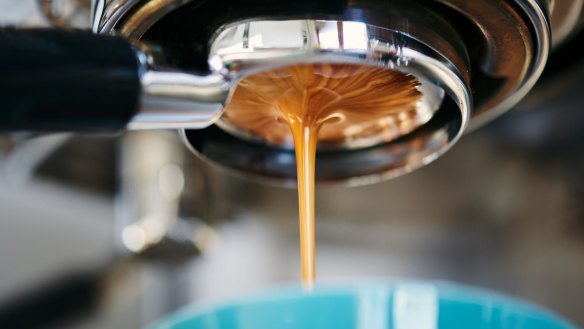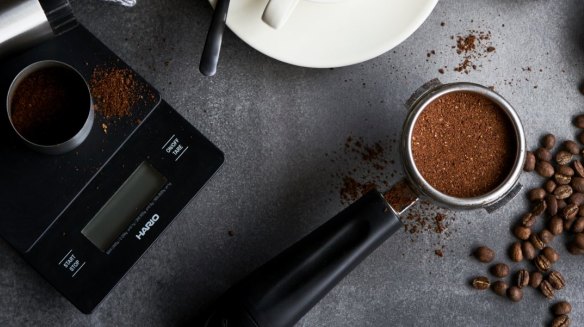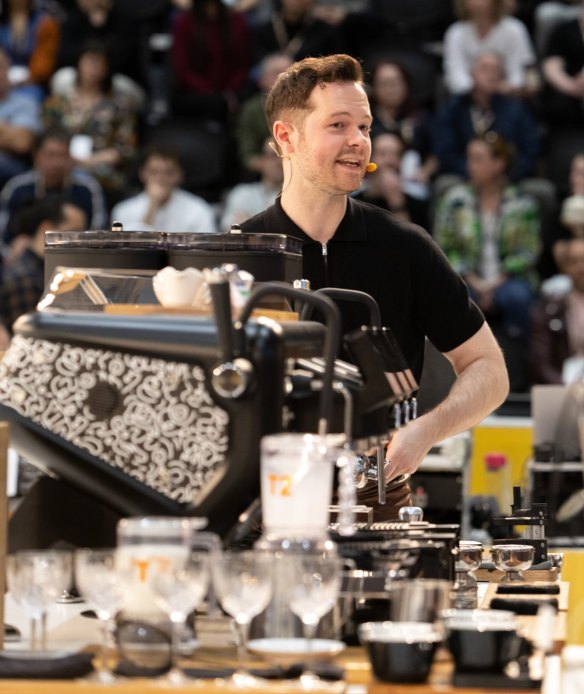World barista champion's essential tips for making perfect espresso coffee at home

Victorian Anthony Douglas was recently crowned the 2022 World Barista Champion in Melbourne. He shares his guide to pouring a world-class shot of coffee.
Follow the recipe
"Always a good idea. It's worthwhile picking up a cheap set of scales so you know how much coffee you're putting in and how much coffee you're getting out in the cup, as well as your contact time. It depends where you get your coffee from but if you're buying from, say, a local roaster, you can ask them for a recipe and they'll be able to help you out with that."
Grind your coffee fresh
"Once you grind coffee it does tend to go stale and de-gas very quickly."
Buy good quality coffee

"I know that might sound obvious but if you're buying a cheap sort of coffee from the supermarket, you probably won't get as good results as buying something roasted by a reputable roaster. So, make sure you're working with a good-quality raw product."
Go with the flow
"A lot of quality in coffee actually comes from the water flowing through the bed of coffee evenly. So, it might be worthwhile taking a class just so you can learn fundamentals of dosing and distribution. So, how you're actually putting the coffee into the handle and how to settle that coffee. It's [got to be] nice and flat, and you're preparing an even bed that will ensure that the water flows through evenly."

Get forensic with dosing
"You want to make sure that you're dosing the coffee as evenly as possible into the basket. So, if you're dosing straight from a grinder, that would generally look like you'll be dosing a little pyramid in the centre, a nice, even mound, not too close to one side or another. That will set you up to distribute the coffee well.
Distribute or die
"I believe using pins is one of the best ways of distributing coffee evenly. [Douglas used a mechanised version of something called the Weiss Distribution Technique on the world stage.] Ideally, if you are using pins, they've got to be very thin, because you don't want to create pockets or holes in the coffee that could cause channelling. If you don't have access to a tool like that, you can do what's called palm collapsing, which is where you tap the side of the handle with your palm and just settle the coffee as flat as you can."
Get in the tamp zone
"Tamping prevents the water from flowing through too quickly, which allows the coffee to saturate with water while still providing resistance. This extends the contact time, allowing the water to fully extract all the compounds it needs from that coffee. Tamp the coffee down until it stops moving. Any further pressure is redundant. Coffee will only compact to a certain point but if you apply any more pressure, there's a risk that you might tamp unevenly or inconsistently.
"Having said that, I would always err to tamping a little heavier. Although it's redundant to a certain point, at least you know you've fully compacted the coffee. I use my body weight. If I'm tamping, I'm side-on to the bench, the handle is parallel to me and I'm just literally leaning into it."
Watch your water
"Water doesn't make a massive difference. We're quite lucky in Melbourne in that we've got water that is quite soft and for the most part it's pretty good for making coffee. And if you're buying coffee from a Melbourne-based roaster, most likely the water from your tap will be suitable for that coffee. It does change depending on the region [roasters are roasting for] but not a whole lot."
Clean your machine
"You won't have to do it as much at home as a cafe because you're not putting as much coffee through, but I would run some espresso machine cleaner – a chemical or a cleaning agent that's designed to clean espresso machines – to remove coffee oils that have built up. I would do that once a week at home. And every day, when you're finished making coffee, I do what's called a water back flush, where you're running water through the system to help clean and remove any oils that are built up."